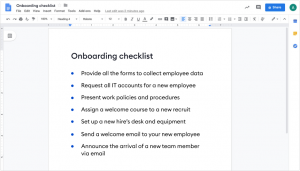Google’s drive to popularize and refine content marketing is well-known to bloggers, especially those who have fallen foul of its multiple algorithm changes.
Interestingly, the rise of content marketing has actually heralded fortunes for the practice of blogging. While it is made it increasingly difficult to maintain profitable sites that generate income through advertising and paid content, for example, it has also heightened the commercial importance of hosting an engaging and information blog. Like the values of SEO before it, we see that far from making blogging obsolete, the evolution of content marketing has simply forced business owners and marketers to redefine and re-purpose their blog sites.
Leveraging the Value and Popularity of your Blog
So while blogging may no longer be able to generate the same level of revenue that it did previously, it can still drive business growth through brand awareness, thought leadership and increased sales conversions. The key is to leverage the value of your blog, primarily by building on its existing popularity and transcending this to drive turnover and profitability. Let’s take a look at some of the best ways to achieve this aim: –
Prioritize the Development of Original, Relevant and Informative Content
In the modern age, your blog may well be considered as the entry point into a relationship with customers. It is here that have one of the first opportunities to engage their interest, and establish the formative foundations of trust and loyalty. This process has become renowned in recent times as thought leadership, and blogging remains one of the most influential and organic ways in which to establish yourself as a prominent player in your chosen market.
This will clearly boost turnover in the long-term, but the quality, originality and relevance of your content is crucial of you are achieve such a goal. Many bloggers are deceived by the notion that any copy can successfully engage readers so long as it is well written, but the parameters enforced by Google’s algorithms mean that this is far from the truth. Instead, all published content must be informative and insightful, engaging the reader while also remaining relevant to the core themes of the blog. If your content fails to meet these guidelines, it is unlikely to initiate a relationship with customers and may even lead to a dreaded Google penalty.
Review and Optimize the Structural Layout of your Blog
Once you have tackled the quality and relevance of your blog’s content, the next step is to ensure the structure and layout of each page has been optimized to drive brand awareness. While your main priority must always be the development of rich and informative content, this means little unless you are able to reinforce your brand through the subtle use of visual elements. This way, readers and customers will begin to associate your brand with impactful and authoritative insight, and this will help to factors such as loyalty and consumer retention.
So how exactly can you achieve this? It is certainly easier said than done, as marketers and bloggers that choose to overtly promote their brand are taking a huge risk in an age of organic SEO. Instead, you should commit to implementing stringent A/B testing on your blog, just as you would with a home or product landing page. This enables you experiment with alternative layouts and determine which option will help you to effectively and organically promote your brand, as you refine headlines, link placements and your logo to ensure that they are fit for purpose. This process will also identify which layouts deliver optimal profit levels, so you can hopefully structure your blog to achieve both branding and monetary goals.
Optimize your Blog for Mobile Usage
While this may sound obvious, this is arguably one of the most important and yet understated techniques for driving business growth through blog interaction. The issue is that while many blog and business owners will optimize their home and product pages to suit the needs of mobile consumers, fewer consider applying the same principle to their blog. This represents a considerable error in judgement, however, as while 37% of U.S. consumers indicated that they would favour shopping directly through their smartphone rather than in-store last Christmas, even more looked to reference products and research brands on mobile devices.
With your blog already established as the entry point into a relationship with consumers, the failure to optimize it for mobile use could have a devastating impact on turnover and sales conversion. With customers increasingly likely to visit your blog to find out more about the brand, it is imperative that you first invest in a responsive design that adapts to each individual mobile device. You should ensure that your blog pages take no longer than three seconds to load on screen, while also strategically placing relevant internal links and actionable icons that direct readers to associated product pages.
(269)




